So What’s New?
By Randy McIntosh
So, what’s new and excitin’?
Although it's a common question, I tend to associate it with my Maritime friends, who emphasize it with a thick accent. I often struggle to come up with a witty answer, usually settling for something more mundane, like discovering a great new pizza place—though maybe that’s not as banal as it seems.
Applying this question to the McIntosh Lab, there's plenty to report, especially after a long hiatus since our last update in Fall 2022.
To start, we moved to Simon Fraser University (SFU) in January 2022. It was quite a jump from Toronto to Vancouver. Why the move, you may ask? I was presented with the opportunity to establish a new Institute for Neuroscience and Neurotechnology, known as the INN. The goal is to unify neuroscience across the three SFU campuses. This move came with an endowed chair, but the genuine enthusiasm for creating the INN and fostering collaboration truly attracted me. Every neuroscientist I spoke with, from those focused on stem cells to animal models and human cognitive neuroscience, expressed that the INN was a vital and necessary initiative. Since early 2022, the INN has been making substantial progress and has been successful by all metrics. Our annual report highlights some key milestones.
The INN represents the "new" aspect, while the "exciting" part lies in our accomplishments:
Establishing a common informatics core for neuroimaging data, which will be expanded to accommodate broader datasets
Hosting a monthly seminar series
Organizing annual workshops
Conducting training events
Leading the development of SFU's Open Science Policies
TheVirtualBrain (TVB) remains a central focus for our lab. We've been expanding its applications to development and healthy aging, utilizing its foundation in nonlinear systems to enhance brain theory. One of our latest papers, co-authored with Lauren Ross and my longtime collaborator Viktor Jirsa, is about the concept of "Possibility Space." In essence, possibility space contains all potential brain network configurations, including those frequently used and accessible, as well as those that are possible yet seldom employed (or even hidden).
The “possibility space” of brain networks.
Our TVB work has now expanded to a lifespan focus, where we have work spanning from children to late adulthood. Leanne Rokos is driving the developmental work, and Justin Wang is stitching together the adulthood work. These efforts both have clinical connections, particularly in ageing and dementia. We’ll continue to move the projects forward and then merge them so to create a TVB Lifespan platform where we can create synthetic cohorts and simulate longitudinal trends. The simulations are a sort of sandbox where we can identify aspects of brain architectures that are associated with health, resilience, and risk of pathology.
The brain doesn’t exist in isolation. We’ve started contextualizing brain dynamics with another exciting development reflected in our last year's workshop on Sociocultural Neuroscience. I have been thinking about the need to better integrate social and cultural factors into neuroscience since my time in Toronto, but I didn’t take action until now. The workshop aimed to foster discussions about current thinking in this field, identify gaps, and explore opportunities. It was both invigorating and exhausting, and by the end, we had compiled a collection of ideas that formed a sort of white paper.
We are now at the stage of turning our words into action. Although sociocultural work is vast, we have a solid foundation at SFU to make progress incrementally. In my view, SFU has one of the more progressive partnerships with Indigenous groups, especially in British Columbia. A new student in the lab, Katen Kelly, has begun her PhD work focusing on Indigenous care in dementia. This project nicely combines the lab’s history of studying aging and dementia with examining how these subjects are approached in Indigenous cultures. It’s a significant undertaking, but I am confident we can make meaningful strides with our new friends and collaborators at SFU.
Indigenous ways of knowing have captured my interest since I’ve been in British Columbia. I’ve found inspiration from many Indigenous studies researchers at SFU and from conversations during my visits to the western coast of Vancouver Island. Discussions with Michael Yellow Bird, who attended our workshop and recently visited us again, have opened my perspective. We must include these insights in our consideration of brain function and recognize how our brains and ourselves interact within social and cultural systems that can enhance or hinder our resilience.
Katen has offered to share her perspectives through a series of blogs, with the first one coming soon. I hope these blogs provide you with a fresh perspective and inspire thoughts on how we can approach studies of the brain.
All images in this blog were generated by ChatGPT using the prompt ‘Can you generate an image or two that capture the ideas of the attached blog text?’. Its response:
Neuroscience and Possibility Space: A conceptual image representing the “possibility space” of brain networks, showing a dynamic and interconnected brain with pathways branching into different configurations—some well-worn, others hidden.
Sociocultural Neuroscience and Indigenous Knowledge: An artistic representation of the intersection between neuroscience, Indigenous knowledge, and social context. This could include a stylized brain intertwined with cultural symbols, landscapes, or community connections.


